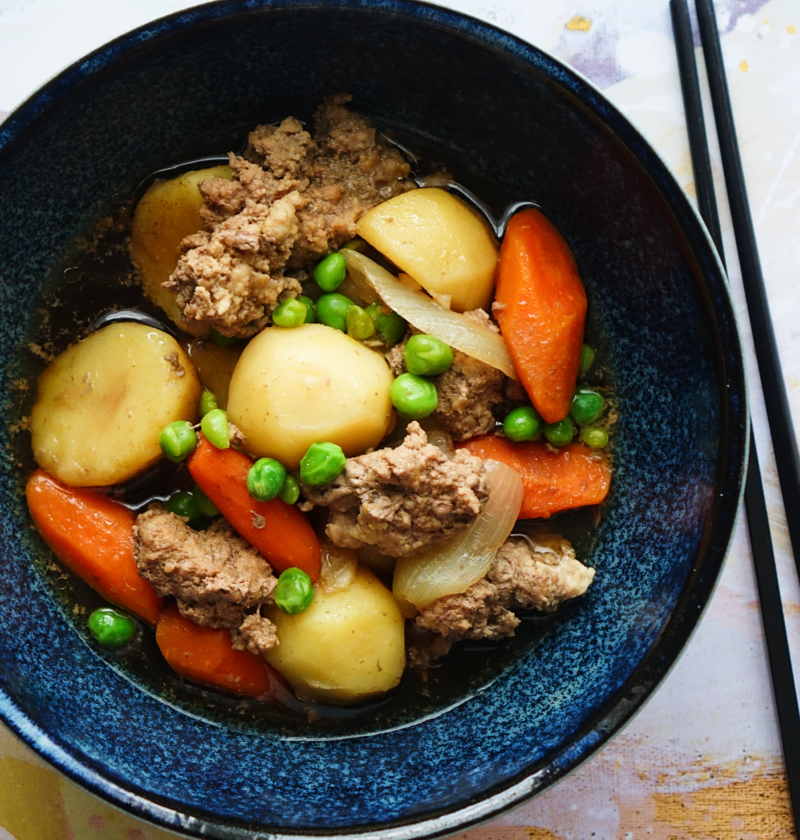
Japanese stew with beef and potatoes is also called Nikujaga. This famous and easy-to-cook hot stew is especially suitable for a winter menu. It tastes salty and slightly sweet because of soy sauce and teriyaki sauce as seasonings.
- Three big potatoes
- One carrot
- One onion
-
One cup of green peas (fresh or frozen)
-
300 grams of minced beef or veal
-
Three tbsp. of soy sauce
-
Three tbsp. of Teriyaki sauce
-
Two tbsp. of cooking vine or white vine
Potatoes: Peel and cut into cubes or any other shape. To prevent them from turning brown, soak them in water for about 5 minutes, then drain.
Onion: Peel and cut into wedges.
Carrot: Peel and slice into rounds or half-moons, depending on the size.
Beef/Veal: In a large pan, slightly cook the minced beef or veal, separates into chunks, over medium heat until browned. No need to add oil as the meat will release its own fat. Once cooked, remove the excess fat.
Sauté Vegetables: In the same pan, sauté the onions until translucent, then add carrots and potatoes. Stir for a couple of minutes.
Add Liquids: Add the soy sauce, teriyaki sauce, and cooking vinegar. Stir to coat the vegetables and meat evenly.
Simmer: Add enough water to just cover the ingredients. Bring to a boil, then reduce to a simmer. Cover and let it cook for about 20 minutes, or until the vegetables are tender. Check occasionally and add more water if necessary to prevent drying out.
Add Green Peas: Add the green peas during the last 5 minutes of cooking. If using frozen peas, there’s no need to thaw them first.
Adjust Seasoning: Taste the stew and adjust the seasoning if needed. You can add a bit more soy sauce or teriyaki sauce for a deeper flavor, or a pinch of sugar for a hint of sweetness.
Serve the Nikujaga hot. It’s traditionally eaten with a bowl of rice and perhaps a side of miso soup.
- Balance of Flavors: The key to a good Nikujaga is the balance between the savory soy sauce and the sweetness of the teriyaki and vegetables. Don’t hesitate to adjust the flavors to suit your taste.
- Cooking Time: Be careful not to overcook the vegetables, especially the potatoes, as they should retain some of their shape and not become too mushy.
- Leftovers: Nikujaga tastes even better the next day as the flavors meld together, making it a great dish for leftovers.
- Options:
- You can use any kind of minced meat for this dish
- Adding Sake instead of vine is also an option for Japanese Beef and Potato Stew
- For a lighter version, you can use less meat and more vegetables, or even substitute the meat with tofu or a meat alternative.
- Presentation: Garnish with a sprinkle of chopped green onions or sesame seeds for an extra touch.
Enjoy your homemade Nikujaga, a classic dish that brings the essence of Japanese comfort food to your table!

